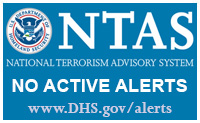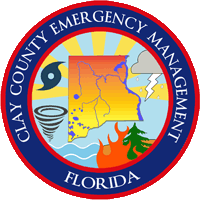Joe, W1WCN, has done training on some of the acronyms that you hear on the radio. Here are those as well as other acronyms and terms you will probably hear.
- Anderson Power Pole –
A type of power plug that the ARRL recommends as a standard so that different operator’s equipment can be quickly interchanged. - APRS – Automatic Packet Reporting System
APRS is a communications protocol that allows stations to send location, weather, and other data real-time. It consists of UI or Unnumbered Information, meaning that the packets are transmitted without expectation of a confirming reply. - ARECC – Amateur Radio Emergency Communications Course(s)
The ARECC was a series of three courses (beginning, intermediate, and advanced) offered by the ARRL. The beginning course (EC-001) was replaced by the Introduction to Emergency Communication course (also numbered EC-001). The intermediate and advanced courses (EC-002 and EC-003) were replaced by the Public Service and Emergency Communications Management for Radio Amateurs course (EC-016). - ARES – Amateur Radio Emergency Service
ARES is a program managed by the American Radio Relay League to offer trained and coordinated amateur radio assistance to local emergency service providers during disasters. - ARRL – American Radio Relay League
The largest and oldest amateur radio advocacy organization in the world. It offers numerous services to amateur radio operators. It is the parent organization for ARES and NTS. - Bug-Out Bag –
A bag or pack that has your “call-out” gear (emergency activation gear).
(Also know as a Go-Bag, Jump-Bag, and Jump-Kit) - DEC – District Emergency Coordinator
An appointed ARRL official who directs the emergency efforts within a district (usually several counties). (The Missouri District “C” DEC is Bill Grimsbo, N0PNP.) - EAS – Emergency Alert System
An emergency broadcast system using public communications (TV and radio) to alert the general public to an emergency situation. - EC – Emergency Coordinator
An appointed ARRL official who directs the emergency efforts for a local area (usually a county). - Every-Day-Carry –
Equipment that you carry on your person or within reach (a handheld radio, flashlight, ID, pocket knife, etc.) - EOC – Emergency Operations Center
A building from which emergency operations are directed. - emcom, emcomm – Emergency Communications
A general term referring to the act of providing communications services during an emergency. - FEMA – Federal Emergency Management Agency
The government agency concerned with disaster preparation and disaster recovery. - first responder –
The first person or agency to be sent to the scene of an emergency. Amateur radio volunteers would not be considered first responders. - FRP – Federal Response Plan
The U.S. Government’s plan to provide for federal assistance to states and communities in any major disaster or emergency. - FRS – Family Radio Service
An unlicensed personal radio service in the UHF band. All radios in this service must be hand-held units transmitting no more than 1/2 watt. FRS radios could be useful during special events or emergencies where large numbers of volunteers who are not amateur radio operators need to communicate. - GMRS – General Mobile Radio Service
A licensed personal radio service in the UHF band. For the price of the license fee (there is no exam) you may set up base, mobile, and repeater systems running up to 50 watts. - Go-Bag –
A bag or pack that has your “call-out” gear (emergency activation gear). (Also know as a Bug-Out-Bag, Jump-Bag, and Jump-Kit) - ICS – Incident Command System
A management tool to bring multiple agencies together under one command structure during an emergency.
FEMA has developed several message forms to be used during emergencies, all of which have the prefix “ICS”. - Jump-Bag, Jump-Kit –
A bag or pack that has your “call-out” gear (emergency activation gear).
(Also know as a Bug-Out-Bag or a Go-Bag) - MARS – Military Affiliate Radio System
A military-run radio system that uses frequencies close to the amateur radio bands. MARS sometimes interacts directly with amateur radio, especially for message handling. - Molex 1545 series –
A type of power plug once favored by the ARRL as a standard so that different operator’s equipment could be quickly interchanged. The Molex 1545 can handle 12 amps of current. Many operators now favor the Anderson Power Pole instead because it can handle greater current. - MOU – Memorandum Of Understanding
A written agreement between two organizations describing their cooperative efforts.
ARES teams usually have MOUs with all agencies that they support. - MURS – Multiple Use Radio System
A large number of VHF hand-held radios were marketed and sold through catalogs and on the Internet. Most of them were preset to one of five VHF business band frequencies. Although a license was required, few people buying the radios bothered to obtained one. The FCC, realizing the difficulty in policing these five frequencies, simply declared them to be a new “multi-use” band requiring no license. Since there are a great many of these radios available, they are sometimes used during special events and emergencies. - NCS (1) – National Communications System
An umbrella organization covering the communications needs of 23 federal agencies. - NCS (2) – Network Control Station
A station, or more likely, an operator who is running a radio network. He or she is in charge of the flow of traffic on that net. - NTS – National Traffic System
An ARRL-run network of operators who pass telegram-like messages throughout the United States. - NVIS – Near Vertical Incidence Skywave
An antenna system designed to send HF transmissions almost straight up, where they bounce off of the ionosphere and return to earth to cover a wide area around the sending station. - NOAA Weather Radio –
The National Oceanographic and Atmospheric Administration’s nationwide network of radio stations broadcasting continuous weather information direct from nearby National Weather Service offices. - NWS – National Weather Service
- OES – Official Emergency Station
An appointed ARRL operator who performs some specific emergency communications-related function(s) and is generally held to a higher standard of operations and behavior. - PIO – Public Information Officer
A person assigned to make public statements and handle queries from the press and public. - Quick Response Team –
See RRT, Rapid Response Team - RACES – Radio Amateur Civil Emergency Service
Amateur radio groups organized by civil authorities to perform emergency communications. In St. Louis County, the County Office of Emergency Management manages a RACES group. - RRT – Rapid Response Team
As described in the textbook, a small group of emergency communicators who are the first to report during an emergency. They activate strategically placed communications systems. There may be a “level 1” (immediate) RRT, followed later by a “level 2” (heavier support) RRT. - SAME – Specific Area Message Encoding
The NOAA Weather Radio’s system for activating the severe weather alert system on many home weather radios on a selective basis. - SATERN – Salvation Army Team Emergency Radio Network
The Salvation Army’s internally managed amateur radio effort. - SEC – Section Emergency Coordinator
An appointed ARRL official who directs the emergency efforts within a section (usually a single state). - served agency –
As an “emergency communicator” you will always be working for someone. You will never be managing an emergency yourself. You will be assisting some civil agency (police, fire, etcetera) or other emergency relief organization (hospital, Red Cross, etcetera). The agency or organization to which you provide communications services is the “served agency”. - SOP – Standard Operating Procedure
The protocol established by an agency for its operation. - SOU – Statement of Understanding
See MOU, Memorandum of Understanding. - SKYWARN –
A program managed by the National Weather Service that utilizes trained volunteer “spotters” to send in real-time on-the-ground reports of severe weather. - SM – Section Manager
An elected ARRL official who directs the League’s efforts within a subsection of a region. Most Section Managers take care of a single state. (The Missouri Section Manager is Dale Bagley, K0KY.) - traffic –
Messages sent over the air. Usually this means formal written messages. - VOX –
A microphone/radio system that uses the operator’s voice to activate the transmitter instead of a manual button.




